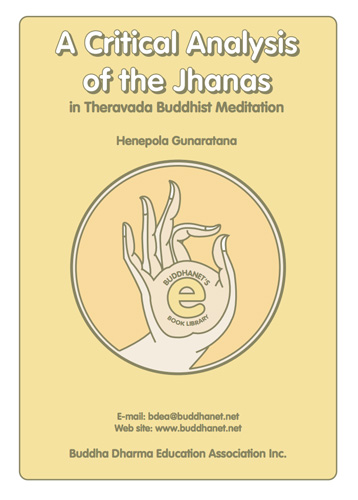 Last additions - Buddhist Meditation Last additions - Buddhist Meditation |

Forest_Dhamma.pdfForest Dhamma: A Selection of Talks on Buddhist Practice3450 viewsTraining the heart to attain happiness is the way that all the Buddhas proclaimed to be the right and true way. When our hearts never have time to rest and attain calm, they are not fundamentally different from those of animals. But when our hearts rest, relax and receive training, we will be able to see the harmful affects of thinking and imagining, and turbulence they cause in the heart. Then we will come to see the value of a calm heart. Once we have attained a state of mental calm, we will have reached the first stage of Dhamma, which will lead us steadily onwards. In other words, we will have a firmly established faith in the principles of Dhamma...Feb 26, 2011
|
|

Arahattamagga.pdfArahattamagga, Arahattaphala: The Path to Arahantship4118 viewsAt present, all that is left of Buddhism are the words of the Buddha. Only his teachings ñ the scriptures ñ remain. Please be aware of this. Due to the corruption caused by the defiling nature of the kilesas, true spiritual principles are no longer practiced in present-day Buddhism. As Buddhists, we constantly allow our minds to be agitated and confused, engulfed in mental defilements that assail us from every direction. They so overpower our minds that we never rise above these contaminating influences, no matter how hard we try. The vast majority of people are not even interested enough to try: They simply close their eyes and allow the onslaught to overwhelm them. They don't even attempt to put up the least amount of resistance. Since they lack the mindfulness needed to pay attention to the consequences of their thoughts, all their thinking and all they do and say are instances of the kilesas giving them a beating. They surrendered to the power of these ruinous forces such a long time ago that they now lack any motivation to restrain their wayward thoughts...
Feb 26, 2011
|
|

TowardsAnInnerPeace-VF11p.pdfTowards an Inner Peace3446 viewsIn Towards an Inner Peace, Venerable Dhammajiva instructs yogis to progress by developing continuous mindfulness and deep concentration. He takes yogis through a journey, which progressively leads to the development of vipassana insights. His step by step instructions provide an invaluable theroretical basis to confront and embrace the challenges along the path to attain a state of path and fruition consciousness.May 12, 2010
|
|

Recollections.pdfThe Ten Recollections - A Study Guide3912 viewsThe ten recollections are a set of meditation themes that highlight the positive role that memory and thought play in training the mind. They employ memory to sensitize the mind to the need for training, to induce feelings of confidence and well-being conducive for concentration, to keep the topics of concentration in mind, to produce tranquility and insight, and to incline the mind toward the deathless when tranquility and insight have grown sufficiently strong.May 03, 2010
|
|

Aggregates.pdfA Burden Off the Mind: A Study Guide on the Five Aggregates7030 viewsOne of the new concepts most central to the Buddha's teaching was that of the khandhas, usually translated into English as “aggregates.†Prior to the Buddha, the Pali word khandha had very ordinary meanings: A khandha could be a pile, a bundle, a heap, a mass. It could also be the trunk of a tree. In his first sermon, though, the Buddha gave it a new, psychological meaning, introducing the term “clinging-khandhas†to summarize his analysis of the truth of stress and suffering. Throughout the remainder of his teaching career, he referred to these psychological khandhas time and again. Their importance in his teachings has thus been obvious to every generation of Buddhists ever since.May 03, 2010
|
|

06_the_mahasi_method.pdf06 Introducing the Mahasi Method5341 viewsPatrick Kearney
This is an introduction to the method of insight meditation developed by Mahasi Sayadaw of Myanmar which sums up our introduction to serenity and insight by examining a particular approach to insight meditation. Jan 01, 1970
|
|

05_watching_the_mind-stream.pdf05 Contemplating the Thought Stream4500 viewsPatrick Kearney
Contemplating the thought stream. This week we learn to use the thoughts flowing through the mind as a meditation object, and so redefine our relationship to distraction.Jan 01, 1970
|
|

04_cultivating_love.pdf04 Cultivating the Sublime States4508 viewsPatrick Kearney
Cultivating the sublime states of love, compassion, joy and equanimity. This is an example of a serenity practice which also has implications for insight.Jan 01, 1970
|
|

01_sitting_in_stillness.pdf01 Sitting in Stilness10137 viewsPatrick Kearney
Introducing meditation practice, the concepts of serenity and insight, and the cultivation of stillness.Jan 01, 1970
|
|

scrnguna.pdfA Critical Analysis of the Jhanas in Theravada Meditation5142 viewsThis work, by Ven. Henepola Gunaratana, provides an analytical study of the Jhanas, as they are an important set of meditative attainments in the contemplative discipline of Theravada Buddhism. Despite their frequent appearance in the texts, the exact role of the Jhanas in the Buddhist path has not been settled with unanimity by Theravada scholars, who are still divided over the question as to whether they are necessary for attaining Nibbana.Jan 01, 1970
|
|
|
|
